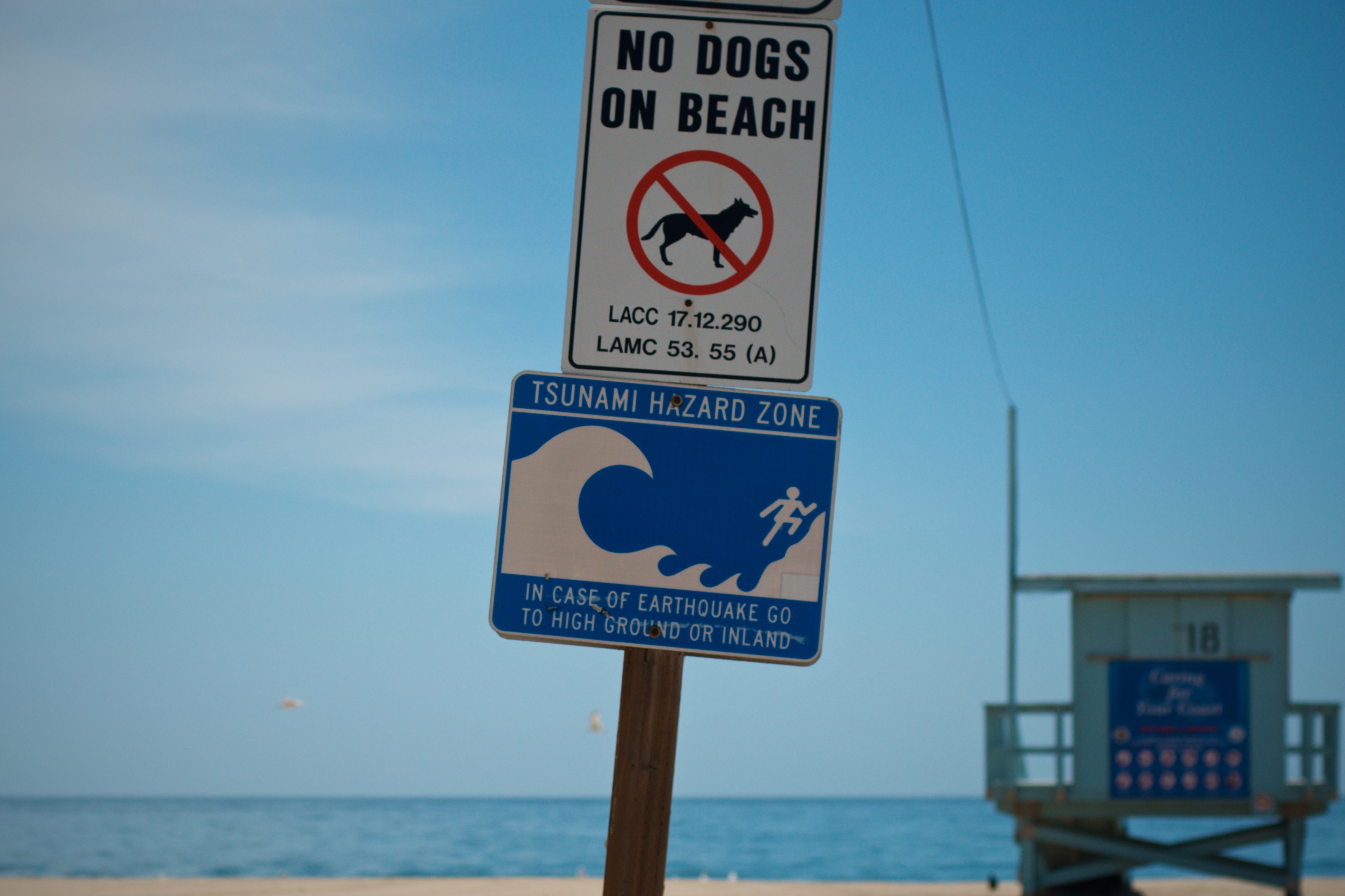by Sam Catanzaro
What to do in Venice if a tsunami warning occurs.
On April 5, a 5.3 magnitude earthquake occurred 48 miles off the coast of Catalina, causing some alarm in Venice about the prospect of a tsunami. Although this was the largest earthquake to strike Southern California in years, it was not large enough to trigger a tsunami warning from the National Weather Service.
Tsunamis are a rare event in Southern California; the last major one occurred in 1812. But tsunamis can be deadly and destructive disasters that can occur quickly, giving residents in low-lying coastal areas very little time to prepare.
Venice is one of the most vulnerable regions in Los Angeles, with many areas right at sea-level. And even though the April 5 earthquake did not produce a tsunami, it provided an opportunity for residents to learn about the tsunami alert system in place.
“The initial tsunami detection and warnings would come from the federal government through the NOAA Pacific Tsunami Warning Center,” said Kate Hutton, an Emergency Management Coordinator for the City of Los Angeles Emergency Management Program. “State and local governments would likely follow up with localized instructions, including evacuation routes and shelters.”
These local alerts would be sent through NotifyLA, the emergency alert system for the City of Los Angeles. Residents would also be alerted by social media and traditional media.

In Venice, the evacuation routes follow major east-west thoroughfares. These include Rose Avenue, Brooks Avenue, Venice Boulevard and Washington Boulevard. Abbot Kinney and Ocean Avenue are also part of the evacuation route, despite running parallel to the coast.
In the open ocean, tsunamis travel around 500 miles per hour. Once they near the coast, their speed is reduced to 30-40 miles an hour by the force of the sea floor in a process known as shoaling. The time it would take a tsunami to reach Venice depends on how far away the tsunami was generated.
“If the tsunami starts in Japan, we could have 12 or more hours. If it starts because of an underwater landslide near Catalina, it could be minutes,” Hutton said.
If a tsunami alert is sent out, emergency officials say that residents should begin the evacuation process immediately, getting away from the ocean to high ground as quick as possible.
“Never go down to the beach, harbor or coastline area to watch for a tsunami. When you can see the wave you are too close to escape. Tsunamis can move faster than a person can run,” warns the County of Los Angeles Department of Emergency Management on their website.
Because of the potential of having only minutes to evacuate, the City encourages coastal residents to sign up for emergency alerts at emergency.lacity.org/notifyla. In addition, residents should also have an emergency kit and “go-bag” prepared with everything they might need to evacuate. According to the City, these bags should include food and water, medications, a change of clothes plus comfortable shoes, copies of important documents, first-aid supplies and personal hygiene products. For pet owners, a pet carrier and leash should also be included.


























